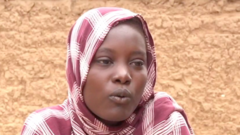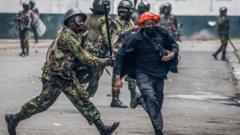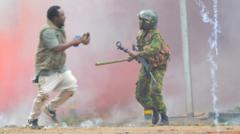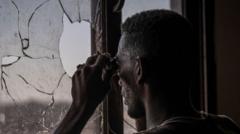Senait Mebrehtu mourns her 14-year-old daughter Hiyab, who drowned during a perilous crossing over Lake Turkana en route to Kenya. As the smuggling network adapts to increased border patrols, families are left vulnerable to the harrowing consequences of seeking asylum.
Heartbreak at Lake Turkana: A Mother’s Grief and the Perils of Human Smuggling
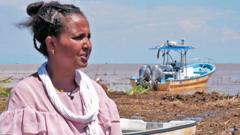
Heartbreak at Lake Turkana: A Mother’s Grief and the Perils of Human Smuggling
The tragic drowning of a young Eritrean girl highlights the dangerous routes exploited by human traffickers in East Africa.
As the sun dipped below the horizon at Lake Turkana, Senait Mebrehtu stood weeping, throwing flowers into the water as a tribute to her 14-year-old daughter, Hiyab, who tragically drowned while attempting to reach Kenya through a new smuggling route. Having fled religious persecution in Eritrea three years prior, Senait made the pilgrimage to the lake to understand the circumstances of her daughter’s death. Hiyab had been traveling with her sister, who managed to survive the ill-fated crossing.
“If the smugglers had informed me about the dangers of this immense lake, I never would have let my daughters undertake this journey,” Senait expressed, grief weighing heavily on her heart. She had arrived in Kenya on a tourist visa with her two younger children but was unable to take her older daughters due to their proximity to conscription age.
The desperate teenagers yearned to join their mother, and after consulting relatives, Senait reluctantly engaged traffickers to facilitate their escape from Eritrea. The girls were subjected to a grueling journey through northern Ethiopia and onwards to Lake Turkana, a notorious crossroads for migrants seeking asylum.
A female smuggler acknowledged to the BBC that Lake Turkana has become a favored yet risky crossing point, dubbing it the “digital route” due to its newness. She operates within an extensive network, moving people from East Africa to other regions, and shared that human smuggling has escalated following intensified border controls in Kenya.
“Agents” offering transport from the fishing village of Lomekwi often overload boats, a fact underscored by Senait’s assertion that more than 20 migrants were crammed onto Hiyab’s small vessel, illustrating blatant negligence. Onlookers recalled the moment the overcrowded boat capsized, leading to multiple fatalities in the tragic event.
In the aftermath, local fishermen reported finding migrant bodies washed ashore, verifying the dangers of this route. Current statistics reveal an alarming rise in Eritrean refugees; as of June 2024, the UNHCR documented over 345,000 individuals, illustrating a desperate exodus fueled by military conscription and oppressive governance.
Legal expert Mula Berhan indicated that with conflicts escalating in neighboring Ethiopia and Sudan, East Africa has become a crucial transit setting for Ethiopian and Eritrean refugees aspiring for a better future, often seeking refuge in Uganda and further afield.
Despite her sorrow, Senait expressed gratitude that her elder daughter escaped harm, illustrating the complex emotions experienced by families ensnared in this human tragedy. “May God alleviate our suffering and bring peace to our homeland,” she wished, a poignant reminder of the enduring human spirit amidst adversity, even as trafficking networks capitalize on the vulnerable seeking safety.





